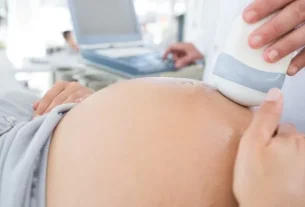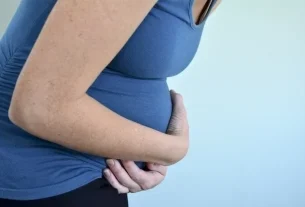To get pregnant again after a tubal pregnancy, it is recommended to wait around 4 months if the treatment was carried out with medication or curettage, and 6 months if abdominal surgery was performed.
Tubal pregnancy is characterized by implantation of the embryo outside the uterus, with the most common site of implantation being the Fallopian Tubes. This condition is also known as an ectopic pregnancy and is usually identified when a woman experiences symptoms such as sharp abdominal pain and bleeding, but the doctor may discover that it is a tubal pregnancy when performing an ultrasound.

Some women may find it difficult to get pregnant again after having an ectopic pregnancy, especially if one of the tubes ruptured or was injured during embryo removal. Women who needed to remove or injured both tubes will not be able to get pregnant again naturally, requiring treatment such as in vitro fertilization, for example.
It is possible to find out if one of the tubes is still in good condition, with a chance of getting pregnant again naturally, by carrying out a specific test called hysterosalpingography. This examination consists of placing a contrasting substance inside the tubes, thus highlighting any injury or ‘blockage’.
Tips to increase your chances of getting pregnant
If you still have at least one tube in good condition and have mature eggs, you still have a chance of getting pregnant. Therefore, you must pay attention to your fertile period, which is when the eggs are mature and can be penetrated by sperm. You can calculate your next period by entering your details below:
Now that you know which days are best for you to get pregnant, you should invest in intimate contact on those days. Some aids that may be useful include:
- Use an intimate lubricant that increases fertility called Conceive Plus;
- Remain lying down after sexual intercourse, avoiding the release of ejaculated liquid;
- Wash only the external region (vulva), not performing a vaginal shower;
- Eat foods that increase fertility such as dried fruits, peppers and avocados. Discover other examples here.
- Taking medicines that stimulate ovulation like Clomid.
Furthermore, it is important to remain calm and avoid stress and anxiety that can lead to hormonal changes, which can even alter the menstrual cycle and consequently the fertile days.
Women are usually able to get pregnant in less than 1 year of trying, but if the couple is unable to get pregnant after this period, they should be monitored by a gynecologist and urologist to identify the cause and carry out appropriate treatment.

¡Suscríbete a nuestro newsletter y mantente al día con novedades exclusivas que pueden transformar tu rutina!
Warning: Undefined array key "title" in /home/storelat/public_html/wp-content/plugins/link-whisper-premium/templates/frontend/related-posts.php on line 12
Warning: Undefined array key "title_tag" in /home/storelat/public_html/wp-content/plugins/link-whisper-premium/templates/frontend/related-posts.php on line 13





